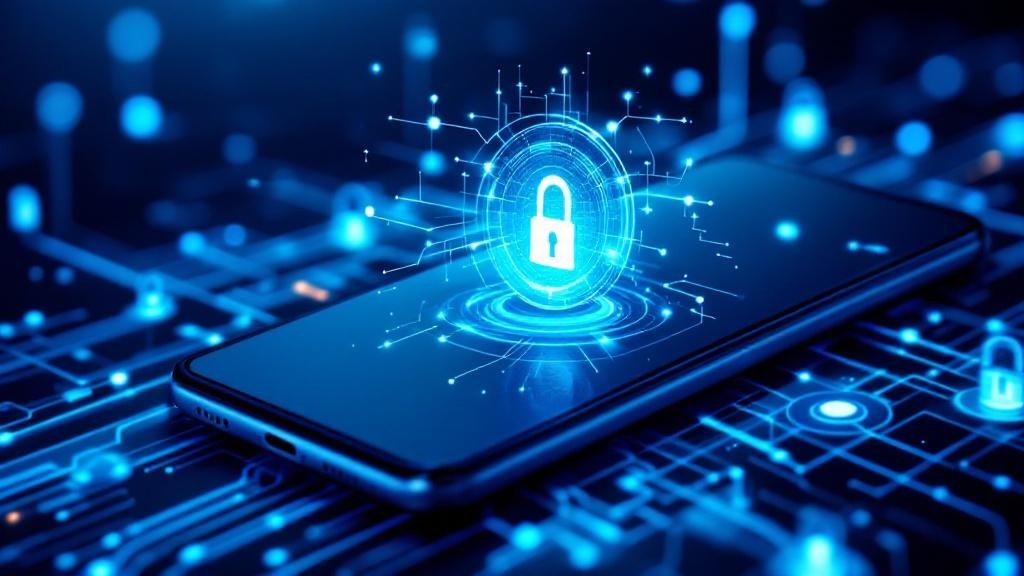In today’s digital-first world, more of us are relying on mobile wallets to pay bills, shop online, and even transfer funds globally. But with that convenience comes a rising concern: how safe is our money and data in these wallets? That’s where digital wallet encryption comes in — and in 2025, it’s more advanced than ever.
If you’re using apps like Google Pay, Apple Wallet, PhonePe, or Paytm, this article is your guide to understanding how your data is protected behind the scenes.
🔐 What Is Digital Wallet Encryption?
At its core, digital wallet encryption refers to the process of encoding sensitive information—like credit card numbers, personal data, and transaction details—so that only authorized parties can access it.
Think of it as putting your money and identity into a vault and locking it with a code only your wallet provider can unlock (and only when you permit it).
🧠 Why Encryption Matters More Than Ever in 2025
With cybersecurity in fintech becoming a top concern, 2025 has brought major advancements in how secure digital wallets really are. We’ve seen an alarming rise in:
Data breaches in digital wallets
Payment fraud attempts
Identity theft via unsecured apps
Consumers now demand end-to-end encryption for wallets to ensure their personal data isn’t exposed to hackers.
🔎 How Digital Wallet Encryption Works (In Simple Terms)
Let’s break it down:
🔢 1. Data Is Encrypted on Your Device
The moment you enter card details into your mobile wallet, they’re encrypted—converted into unreadable code—using advanced algorithms.
🔐 2. Secure Transaction Protocols Kick In
When you make a payment, the app uses TLS (Transport Layer Security) and tokenization vs encryption protocols to ensure your data isn’t sent in plain text.
🏦 3. Decryption Happens Only at the Authorized Endpoint
Your bank or the payment gateway decrypts the data only to verify your payment. No one in between can read it.
🛡️ Encryption Methods for Digital Wallets in 2025
Wallet providers now follow a mix of advanced techniques to keep user data airtight:
H3: 1. AES (Advanced Encryption Standard) 256-bit
This is the gold standard of digital wallet encryption algorithms—used by governments and banks worldwide.
H3: 2. Elliptic Curve Cryptography (ECC)
ECC provides high-grade encryption with less processing power, making it ideal for mobile apps.
H3: 3. Tokenization
Your real card number is replaced with a random token that’s useless if stolen. It’s like using a fake key that only works once.
H3: 4. Multi-Factor Authentication (MFA)
Even with encrypted data, MFA ensures that only you can complete a transaction using:
Fingerprint or Face ID
OTPs (One-Time Passwords)
Biometric scans
📱 Mobile Wallet Encryption in Action: Real-Life Examples
✅ Apple Pay
Uses Secure Enclave, a hardware-based encrypted chip in iPhones. It never stores or shares your actual card numbers.
✅ Google Wallet
Implements tokenization, MFA, and end-to-end encryption. Every tap is encrypted, masked, and double-authenticated.
✅ Paytm & PhonePe (India)
In 2025, they’ve adopted PCI DSS compliance and added new layers like device fingerprinting and real-time fraud monitoring.
🧯 Data Breaches in Digital Wallets: What Went Wrong?
Despite all these protocols, breaches can still occur—mostly due to poor user practices or outdated systems. Here are some 2024 case studies:
A wallet app storing user data without encryption led to a leak of 300,000 email IDs.
One fintech firm failed to update their encryption keys and exposed sensitive transaction logs.
Lesson? Even the best encryption is only effective when updated and maintained properly.
🧩 Encryption in Fintech Apps: The Bigger Picture
It’s not just about digital wallet protection anymore. Today’s fintech apps handle:
Investments
Loans
Insurance
Identity Verification
So they must meet stricter standards in personal data protection, such as GDPR, India’s Digital Personal Data Protection Act (DPDP 2023), and PCI DSS.
📌 PCI DSS Compliance: A Must in 2025
All secure payment apps and wallets must now comply with the Payment Card Industry Data Security Standard (PCI DSS), which includes:
Regular audits
Encrypted data storage
Access control policies
Secure coding practices
Failure to comply can result in app takedowns or massive fines.
🧠 Tips to Keep Your Digital Wallet Secure
You don’t need to be a techie to stay safe. Just follow these steps:
Update your apps regularly
Enable MFA for all wallets
Avoid using public Wi-Fi for transactions
Never share OTPs or passwords
Use trusted apps only (check for high downloads and recent reviews)
📊 Future Trends in Digital Wallet Encryption (2026 & Beyond)
Here’s what’s coming next:
| Trend | Description |
|---|---|
| Post-Quantum Encryption | Algorithms resistant to quantum computer attacks |
| AI-Driven Security Models | Real-time threat detection based on user behavior |
| Zero Trust Architecture | No user or device is trusted by default—everything is verified |
❓FAQs About Digital Wallet Encryption
1. What is digital wallet encryption and why is it important?
Digital wallet encryption secures your personal and payment data by converting it into unreadable code. It’s vital to prevent unauthorized access, fraud, and identity theft.
2. Is tokenization better than encryption for mobile wallets?
They serve different purposes. Tokenization protects during transactions; encryption protects during storage and transfer. The best wallets use both.
3. How can I check if my mobile wallet is encrypted?
Look for terms like “end-to-end encryption,” PCI DSS compliant, or “secure enclave” in the app’s privacy policy or website.
4. What happens if my encrypted wallet gets hacked?
If encrypted properly, stolen data will be useless without the decryption key. However, change your passwords and report fraud immediately.
5. Does encryption slow down my wallet app?
Modern encryption algorithms like ECC are optimized for speed and don’t noticeably affect app performance.
6. Are encrypted payment apps safe on public Wi-Fi?
They’re safer, but not foolproof. Use a VPN or avoid making financial transactions on unsecured networks.
7. What’s the difference between encryption and secure login?
Encryption protects your data. Secure login (MFA, biometrics) ensures only you can access the data. Both are crucial for safety.
🏁 Final Thoughts: Is Your Wallet Truly Safe in 2025?
Digital wallet encryption has come a long way, evolving from basic password protection to bank-grade algorithms and tokenization. But technology alone isn’t enough. You play a critical role in staying vigilant.
As we move deeper into a cashless economy, remember: A secure wallet is not just about strong encryption—it’s about smart usage too.








Comments (0)